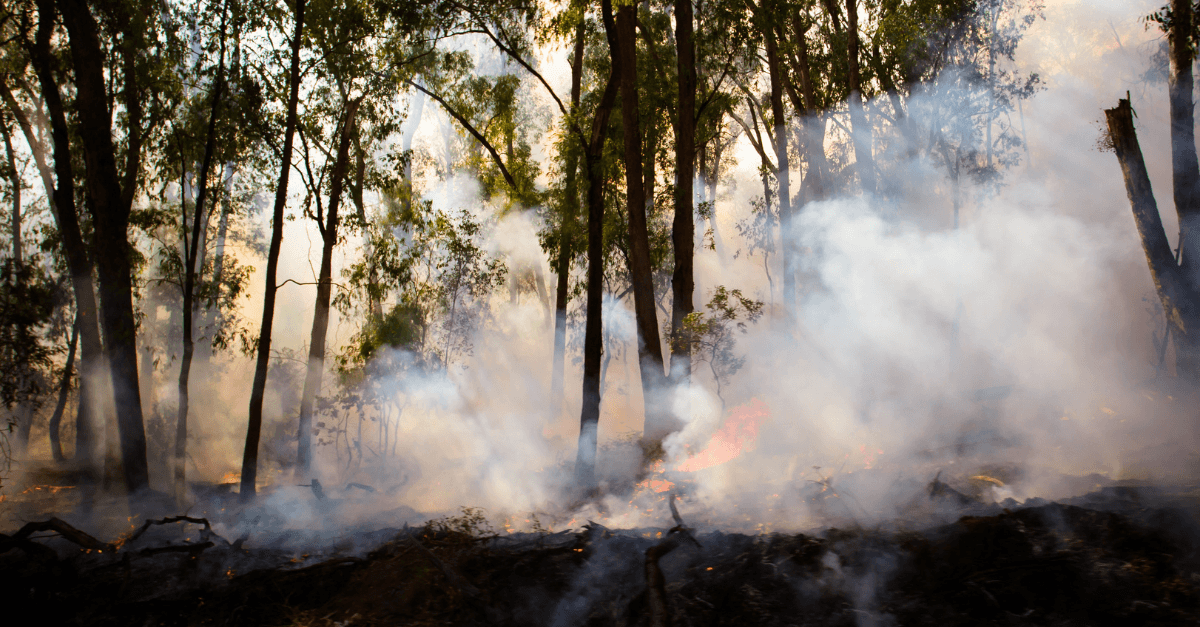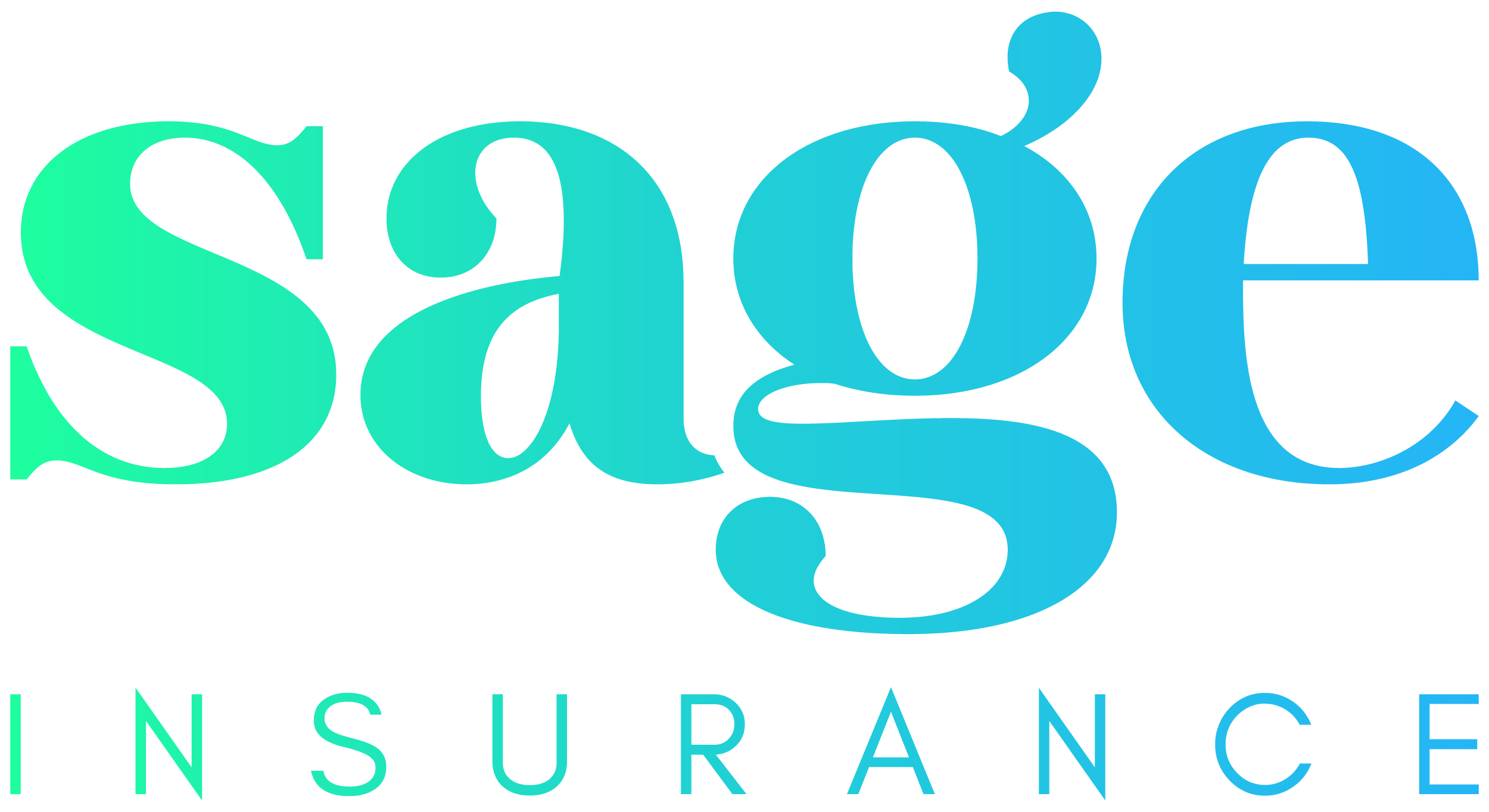


Top 10 Major Global Business Risks For 2025 Identified
Businesses around the world face an increasingly complex landscape of risks that could impact their operations, profitability and long-term sustainability. According to the latest Allianz Global Risk Survey, over 3,700 risk management professionals from more than 100 countries have identified and ranked the top 10 major global business risks for the year. These concerns reflect the evolving challenges companies must navigate in an era of rapid technological advancements, climate uncertainty, geopolitical tensions and economic instability.
Cyber incidents
Business Interruption
Natural Catastrophes
Changes in legislation and regulation
Climate change
Fire, explosion
Macroeconomic developments
Market developments
Political risks and violence
New technologies
Cyber incidents
Cyber risk, particularly ransomware attacks, data breaches and IT outages, remains the top global risk for 2025, marking its fourth consecutive year in this position. This is a significant increase from just 12% in 2015. Ransomware, targeting sensitive data for financial leverage, remains the leading cause of cyber insurance losses, accounting for 58% of large claims in 2024. Additionally, cyber incidents are linked to business interruptions and are the second biggest ESG and sustainability concern for companies, following climate change transition challenges.
Business Interruption
Business interruption (BI) has remained a top risk for the past decade, reflecting ongoing supply chain disruptions, especially post-pandemic. In 2025, BI ranks as the top risk in the Asia Pacific region and in 12 countries, including Austria, China, Hong Kong and Sweden, and affects 11 industries such as food, hospitality and energy. Cyber incidents and natural disasters are the leading BI exposures, followed by fire, machinery breakdown and supplier failure. The push for technological advancements has reduced supply chain resilience, meaning disruptions are more severe and harder to mitigate. High-profile incidents, like the 2024 CrowdStrike IT outage, illustrate these growing risks, with insured losses reaching up to $1bn. Geopolitical risks also contribute to BI concerns, with disruptions in global shipping and transport, such as those caused by the Houthi conflict in the Red Sea or Panama Canal drought restrictions, posing significant economic threats to global trade.
Natural Catastrophes
For the fifth consecutive year, insured losses from natural catastrophes exceeded $100bn, underscoring their ongoing threat. In 2024, significant events like hurricanes Helene and Milton, Storm Boris, flooding,and the Noto Peninsula Earthquake highlighted the global risks. Economic losses from natural catastrophes totalled $310bn, with severe convective storms, tropical cyclones and flooding making up 90% of insured losses. Severe convective storms, particularly in the US, caused $57bn in damage, with $51bn of that from the US alone. Every continent experienced at least one extreme weather event.
Changes in legislation and regulation
In 2025, sustainability reporting will be a key focus, especially in Europe, with regulations like the Corporate Sustainability Reporting Directive (CSRD) and Corporate Sustainability Due Diligence Directive (CS3D). However, the latter’s extensive reporting requirements may drive EU companies away from risky markets, potentially harming development in poorer countries. While European leaders promise to reduce red tape, scepticism remains, as deregulation efforts often stall. In the US, there is concern over a potential "regulatory Wild West" in sectors like cryptocurrency and AI, where unchecked growth could lead to financial crime or misinformation. Additionally, rising tariffs could increase costs for businesses globally, further complicating the regulatory landscape.
Climate change
Climate change has risen to #5 in the Risk Barometer for 2025, marking its highest-ever position. Extreme weather events, including storms, floods and hurricanes, have caused over $100bn in insured losses for five consecutive years. Companies are particularly concerned about physical damage and business interruptions. Transition risks, such as decarbonisation and net-zero strategies, along with growing regulatory challenges, are significant ESG concerns. The financial impact of operational disruptions and resource scarcity continues to rise. Companies are focusing on mitigation measures like increasing insurance coverage, adopting sustainable business models and investing in clean technologies. Building resilience through infrastructure protection and nature-based solutions is crucial for safeguarding operations and sustainability. Secondary climate-related perils like floods and wildfires now pose greater risks than traditional natural hazards, while chronic risks, such as drought and the impact of extreme weather on infrastructure and labour are often underestimated.
Fire, explosion
Fire remains a top global risk for businesses due to its potential for severe damage and disruption, particularly in critical supply chains. While fire risks are well understood and managed, it continues to be the third leading cause of business interruption, feared by 43% of companies, behind cyber incidents and natural catastrophes. Fire risks have been elevated by electrification and the rise of lithium-ion batteries, which can lead to fires if mishandled. The recovery from fire-related disruptions can be prolonged, especially in sectors dealing with flammable materials like pharmaceuticals and chemicals. Regular assessment and updates to fire mitigation practices, including prevention, extinguishing methods and contingency planning, are critical for minimising risks and ensuring business continuity.
Macroeconomic developments
In 2025, global growth is expected to remain stable at 2.8%, consistent with 2024 and 2023, despite geopolitical risks and rising interest rates. While the world economy appears steady, significant challenges persist beneath the surface. Countries like China face structural issues in real estate, while Germany deals with deindustrialisation. The US economy remains strong, buoyed by consumer spending, despite sharp interest rate hikes. However, emerging markets, particularly India and ASEAN, are expected to drive global growth. Business insolvencies are at record levels, with major firms facing bankruptcies and potential domino effects through supply chains. Advanced economies like the US and Germany will see rising insolvencies, while sectors like construction and real estate, particularly in Europe and the US, are especially vulnerable. Global business insolvencies are projected to stabilise but remain high, impacting the financial landscape into 2025 and beyond.
Market developments
For the second consecutive year, companies are increasingly concerned about market developments, which have risen to #8 in the Risk Barometer. Despite challenges such as political crises, rising interest rates and national debt, stock markets have continued to surge, driven by strong fundamentals and recovery in earnings. Experts predict that a major market correction is unlikely in 2025, with equities expected to deliver average returns of 8-10%. However, Europe may face challenges due to expected tariff walls, which could impact mergers and acquisitions (M&A), particularly in the US market. High valuations and a strong dollar could make acquisitions expensive for European companies seeking a larger US presence, while US companies are expected to lead in M&A activity.
Political risks and violence
Political risks and violence remain a top concern for businesses, ranking as a top five global peril despite dropping one position in the Risk Barometer for 2025. Companies are particularly worried about civil unrest, strikes and riots, which have increased in frequency and severity in recent years. This concern is amplified for smaller companies ($100mn-$500mn), which face greater challenges in mitigating risks like property damage, business interruption and supply chain disruptions. Larger companies ($500mn+) also see political violence as a significant risk. Terrorism and sabotage threats have risen, especially in Europe, with events such as the Moscow attack in 2024 highlighting the growing dangers. The unpredictability of political violence and its wide-ranging impacts on supply chains make it difficult for companies to prepare effectively. To mitigate these risks, businesses are advised to strengthen security, implement business continuity plans and monitor local political conditions closely.
New technologies
The rapid adoption of artificial intelligence (AI) has propelled it to become a major global risk concern for the first time in five years. AI offers substantial benefits, such as improving productivity and supporting the transition to Net Zero, but it also presents significant risks, particularly in cybersecurity and privacy. Companies are increasingly using generative AI, but regulatory and risk controls have struggled to keep up. While AI can help mitigate risks, including in cyber defence, its energy consumption presents new challenges, with AI systems demanding much more power than traditional software. This growing energy demand could contribute to environmental impacts and even cause blackouts, particularly in North America. Businesses must balance AI’s advantages with the risks, ensuring that mitigation efforts do not inadvertently exacerbate other issues, such as those related to climate change or cybersecurity.
Businesses around the world face an increasingly complex landscape of risks that could impact their operations, profitability and long-term sustainability. According to the latest Allianz Global Risk Survey, over 3,700 risk management professionals from more than 100 countries have identified and ranked the top 10 major global business risks for the year. These concerns reflect the evolving challenges companies must navigate in an era of rapid technological advancements, climate uncertainty, geopolitical tensions and economic instability.
Cyber incidents
Business Interruption
Natural Catastrophes
Changes in legislation and regulation
Climate change
Fire, explosion
Macroeconomic developments
Market developments
Political risks and violence
New technologies
Cyber incidents
Cyber risk, particularly ransomware attacks, data breaches and IT outages, remains the top global risk for 2025, marking its fourth consecutive year in this position. This is a significant increase from just 12% in 2015. Ransomware, targeting sensitive data for financial leverage, remains the leading cause of cyber insurance losses, accounting for 58% of large claims in 2024. Additionally, cyber incidents are linked to business interruptions and are the second biggest ESG and sustainability concern for companies, following climate change transition challenges.
Business Interruption
Business interruption (BI) has remained a top risk for the past decade, reflecting ongoing supply chain disruptions, especially post-pandemic. In 2025, BI ranks as the top risk in the Asia Pacific region and in 12 countries, including Austria, China, Hong Kong and Sweden, and affects 11 industries such as food, hospitality and energy. Cyber incidents and natural disasters are the leading BI exposures, followed by fire, machinery breakdown and supplier failure. The push for technological advancements has reduced supply chain resilience, meaning disruptions are more severe and harder to mitigate. High-profile incidents, like the 2024 CrowdStrike IT outage, illustrate these growing risks, with insured losses reaching up to $1bn. Geopolitical risks also contribute to BI concerns, with disruptions in global shipping and transport, such as those caused by the Houthi conflict in the Red Sea or Panama Canal drought restrictions, posing significant economic threats to global trade.
Natural Catastrophes
For the fifth consecutive year, insured losses from natural catastrophes exceeded $100bn, underscoring their ongoing threat. In 2024, significant events like hurricanes Helene and Milton, Storm Boris, flooding,and the Noto Peninsula Earthquake highlighted the global risks. Economic losses from natural catastrophes totalled $310bn, with severe convective storms, tropical cyclones and flooding making up 90% of insured losses. Severe convective storms, particularly in the US, caused $57bn in damage, with $51bn of that from the US alone. Every continent experienced at least one extreme weather event.
Changes in legislation and regulation
In 2025, sustainability reporting will be a key focus, especially in Europe, with regulations like the Corporate Sustainability Reporting Directive (CSRD) and Corporate Sustainability Due Diligence Directive (CS3D). However, the latter’s extensive reporting requirements may drive EU companies away from risky markets, potentially harming development in poorer countries. While European leaders promise to reduce red tape, scepticism remains, as deregulation efforts often stall. In the US, there is concern over a potential "regulatory Wild West" in sectors like cryptocurrency and AI, where unchecked growth could lead to financial crime or misinformation. Additionally, rising tariffs could increase costs for businesses globally, further complicating the regulatory landscape.
Climate change
Climate change has risen to #5 in the Risk Barometer for 2025, marking its highest-ever position. Extreme weather events, including storms, floods and hurricanes, have caused over $100bn in insured losses for five consecutive years. Companies are particularly concerned about physical damage and business interruptions. Transition risks, such as decarbonisation and net-zero strategies, along with growing regulatory challenges, are significant ESG concerns. The financial impact of operational disruptions and resource scarcity continues to rise. Companies are focusing on mitigation measures like increasing insurance coverage, adopting sustainable business models and investing in clean technologies. Building resilience through infrastructure protection and nature-based solutions is crucial for safeguarding operations and sustainability. Secondary climate-related perils like floods and wildfires now pose greater risks than traditional natural hazards, while chronic risks, such as drought and the impact of extreme weather on infrastructure and labour are often underestimated.
Fire, explosion
Fire remains a top global risk for businesses due to its potential for severe damage and disruption, particularly in critical supply chains. While fire risks are well understood and managed, it continues to be the third leading cause of business interruption, feared by 43% of companies, behind cyber incidents and natural catastrophes. Fire risks have been elevated by electrification and the rise of lithium-ion batteries, which can lead to fires if mishandled. The recovery from fire-related disruptions can be prolonged, especially in sectors dealing with flammable materials like pharmaceuticals and chemicals. Regular assessment and updates to fire mitigation practices, including prevention, extinguishing methods and contingency planning, are critical for minimising risks and ensuring business continuity.
Macroeconomic developments
In 2025, global growth is expected to remain stable at 2.8%, consistent with 2024 and 2023, despite geopolitical risks and rising interest rates. While the world economy appears steady, significant challenges persist beneath the surface. Countries like China face structural issues in real estate, while Germany deals with deindustrialisation. The US economy remains strong, buoyed by consumer spending, despite sharp interest rate hikes. However, emerging markets, particularly India and ASEAN, are expected to drive global growth. Business insolvencies are at record levels, with major firms facing bankruptcies and potential domino effects through supply chains. Advanced economies like the US and Germany will see rising insolvencies, while sectors like construction and real estate, particularly in Europe and the US, are especially vulnerable. Global business insolvencies are projected to stabilise but remain high, impacting the financial landscape into 2025 and beyond.
Market developments
For the second consecutive year, companies are increasingly concerned about market developments, which have risen to #8 in the Risk Barometer. Despite challenges such as political crises, rising interest rates and national debt, stock markets have continued to surge, driven by strong fundamentals and recovery in earnings. Experts predict that a major market correction is unlikely in 2025, with equities expected to deliver average returns of 8-10%. However, Europe may face challenges due to expected tariff walls, which could impact mergers and acquisitions (M&A), particularly in the US market. High valuations and a strong dollar could make acquisitions expensive for European companies seeking a larger US presence, while US companies are expected to lead in M&A activity.
Political risks and violence
Political risks and violence remain a top concern for businesses, ranking as a top five global peril despite dropping one position in the Risk Barometer for 2025. Companies are particularly worried about civil unrest, strikes and riots, which have increased in frequency and severity in recent years. This concern is amplified for smaller companies ($100mn-$500mn), which face greater challenges in mitigating risks like property damage, business interruption and supply chain disruptions. Larger companies ($500mn+) also see political violence as a significant risk. Terrorism and sabotage threats have risen, especially in Europe, with events such as the Moscow attack in 2024 highlighting the growing dangers. The unpredictability of political violence and its wide-ranging impacts on supply chains make it difficult for companies to prepare effectively. To mitigate these risks, businesses are advised to strengthen security, implement business continuity plans and monitor local political conditions closely.
New technologies
The rapid adoption of artificial intelligence (AI) has propelled it to become a major global risk concern for the first time in five years. AI offers substantial benefits, such as improving productivity and supporting the transition to Net Zero, but it also presents significant risks, particularly in cybersecurity and privacy. Companies are increasingly using generative AI, but regulatory and risk controls have struggled to keep up. While AI can help mitigate risks, including in cyber defence, its energy consumption presents new challenges, with AI systems demanding much more power than traditional software. This growing energy demand could contribute to environmental impacts and even cause blackouts, particularly in North America. Businesses must balance AI’s advantages with the risks, ensuring that mitigation efforts do not inadvertently exacerbate other issues, such as those related to climate change or cybersecurity.
Businesses around the world face an increasingly complex landscape of risks that could impact their operations, profitability and long-term sustainability. According to the latest Allianz Global Risk Survey, over 3,700 risk management professionals from more than 100 countries have identified and ranked the top 10 major global business risks for the year. These concerns reflect the evolving challenges companies must navigate in an era of rapid technological advancements, climate uncertainty, geopolitical tensions and economic instability.
Cyber incidents
Business Interruption
Natural Catastrophes
Changes in legislation and regulation
Climate change
Fire, explosion
Macroeconomic developments
Market developments
Political risks and violence
New technologies
Cyber incidents
Cyber risk, particularly ransomware attacks, data breaches and IT outages, remains the top global risk for 2025, marking its fourth consecutive year in this position. This is a significant increase from just 12% in 2015. Ransomware, targeting sensitive data for financial leverage, remains the leading cause of cyber insurance losses, accounting for 58% of large claims in 2024. Additionally, cyber incidents are linked to business interruptions and are the second biggest ESG and sustainability concern for companies, following climate change transition challenges.
Business Interruption
Business interruption (BI) has remained a top risk for the past decade, reflecting ongoing supply chain disruptions, especially post-pandemic. In 2025, BI ranks as the top risk in the Asia Pacific region and in 12 countries, including Austria, China, Hong Kong and Sweden, and affects 11 industries such as food, hospitality and energy. Cyber incidents and natural disasters are the leading BI exposures, followed by fire, machinery breakdown and supplier failure. The push for technological advancements has reduced supply chain resilience, meaning disruptions are more severe and harder to mitigate. High-profile incidents, like the 2024 CrowdStrike IT outage, illustrate these growing risks, with insured losses reaching up to $1bn. Geopolitical risks also contribute to BI concerns, with disruptions in global shipping and transport, such as those caused by the Houthi conflict in the Red Sea or Panama Canal drought restrictions, posing significant economic threats to global trade.
Natural Catastrophes
For the fifth consecutive year, insured losses from natural catastrophes exceeded $100bn, underscoring their ongoing threat. In 2024, significant events like hurricanes Helene and Milton, Storm Boris, flooding,and the Noto Peninsula Earthquake highlighted the global risks. Economic losses from natural catastrophes totalled $310bn, with severe convective storms, tropical cyclones and flooding making up 90% of insured losses. Severe convective storms, particularly in the US, caused $57bn in damage, with $51bn of that from the US alone. Every continent experienced at least one extreme weather event.
Changes in legislation and regulation
In 2025, sustainability reporting will be a key focus, especially in Europe, with regulations like the Corporate Sustainability Reporting Directive (CSRD) and Corporate Sustainability Due Diligence Directive (CS3D). However, the latter’s extensive reporting requirements may drive EU companies away from risky markets, potentially harming development in poorer countries. While European leaders promise to reduce red tape, scepticism remains, as deregulation efforts often stall. In the US, there is concern over a potential "regulatory Wild West" in sectors like cryptocurrency and AI, where unchecked growth could lead to financial crime or misinformation. Additionally, rising tariffs could increase costs for businesses globally, further complicating the regulatory landscape.
Climate change
Climate change has risen to #5 in the Risk Barometer for 2025, marking its highest-ever position. Extreme weather events, including storms, floods and hurricanes, have caused over $100bn in insured losses for five consecutive years. Companies are particularly concerned about physical damage and business interruptions. Transition risks, such as decarbonisation and net-zero strategies, along with growing regulatory challenges, are significant ESG concerns. The financial impact of operational disruptions and resource scarcity continues to rise. Companies are focusing on mitigation measures like increasing insurance coverage, adopting sustainable business models and investing in clean technologies. Building resilience through infrastructure protection and nature-based solutions is crucial for safeguarding operations and sustainability. Secondary climate-related perils like floods and wildfires now pose greater risks than traditional natural hazards, while chronic risks, such as drought and the impact of extreme weather on infrastructure and labour are often underestimated.
Fire, explosion
Fire remains a top global risk for businesses due to its potential for severe damage and disruption, particularly in critical supply chains. While fire risks are well understood and managed, it continues to be the third leading cause of business interruption, feared by 43% of companies, behind cyber incidents and natural catastrophes. Fire risks have been elevated by electrification and the rise of lithium-ion batteries, which can lead to fires if mishandled. The recovery from fire-related disruptions can be prolonged, especially in sectors dealing with flammable materials like pharmaceuticals and chemicals. Regular assessment and updates to fire mitigation practices, including prevention, extinguishing methods and contingency planning, are critical for minimising risks and ensuring business continuity.
Macroeconomic developments
In 2025, global growth is expected to remain stable at 2.8%, consistent with 2024 and 2023, despite geopolitical risks and rising interest rates. While the world economy appears steady, significant challenges persist beneath the surface. Countries like China face structural issues in real estate, while Germany deals with deindustrialisation. The US economy remains strong, buoyed by consumer spending, despite sharp interest rate hikes. However, emerging markets, particularly India and ASEAN, are expected to drive global growth. Business insolvencies are at record levels, with major firms facing bankruptcies and potential domino effects through supply chains. Advanced economies like the US and Germany will see rising insolvencies, while sectors like construction and real estate, particularly in Europe and the US, are especially vulnerable. Global business insolvencies are projected to stabilise but remain high, impacting the financial landscape into 2025 and beyond.
Market developments
For the second consecutive year, companies are increasingly concerned about market developments, which have risen to #8 in the Risk Barometer. Despite challenges such as political crises, rising interest rates and national debt, stock markets have continued to surge, driven by strong fundamentals and recovery in earnings. Experts predict that a major market correction is unlikely in 2025, with equities expected to deliver average returns of 8-10%. However, Europe may face challenges due to expected tariff walls, which could impact mergers and acquisitions (M&A), particularly in the US market. High valuations and a strong dollar could make acquisitions expensive for European companies seeking a larger US presence, while US companies are expected to lead in M&A activity.
Political risks and violence
Political risks and violence remain a top concern for businesses, ranking as a top five global peril despite dropping one position in the Risk Barometer for 2025. Companies are particularly worried about civil unrest, strikes and riots, which have increased in frequency and severity in recent years. This concern is amplified for smaller companies ($100mn-$500mn), which face greater challenges in mitigating risks like property damage, business interruption and supply chain disruptions. Larger companies ($500mn+) also see political violence as a significant risk. Terrorism and sabotage threats have risen, especially in Europe, with events such as the Moscow attack in 2024 highlighting the growing dangers. The unpredictability of political violence and its wide-ranging impacts on supply chains make it difficult for companies to prepare effectively. To mitigate these risks, businesses are advised to strengthen security, implement business continuity plans and monitor local political conditions closely.
New technologies
The rapid adoption of artificial intelligence (AI) has propelled it to become a major global risk concern for the first time in five years. AI offers substantial benefits, such as improving productivity and supporting the transition to Net Zero, but it also presents significant risks, particularly in cybersecurity and privacy. Companies are increasingly using generative AI, but regulatory and risk controls have struggled to keep up. While AI can help mitigate risks, including in cyber defence, its energy consumption presents new challenges, with AI systems demanding much more power than traditional software. This growing energy demand could contribute to environmental impacts and even cause blackouts, particularly in North America. Businesses must balance AI’s advantages with the risks, ensuring that mitigation efforts do not inadvertently exacerbate other issues, such as those related to climate change or cybersecurity.





